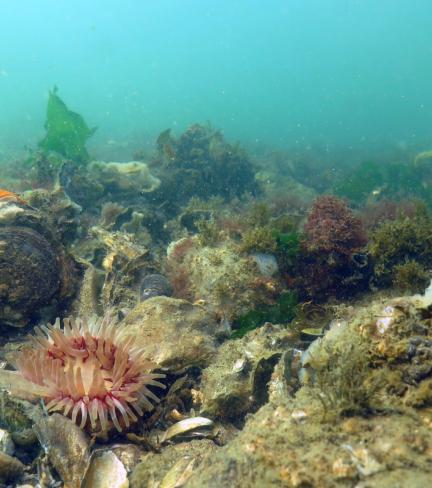Deployment of spat on shell
Before deployment, oyster shells overgrown with millions of larvae - called 'spat on shell' - are put in biodegradable netting and placed inside the cradles. The structure keeps the oysters together and lifts them off the seabed. In this way the oysters aren't swept away by the currents or covered with sand. The oysters are also close enough together to reproduce with one another and clumb together as new young oysters settle on top of their shells. The structure makes it more difficult for predators to reach them. The design is easily deployable from ships and can be produced cheaply, and thus in large amounts. It is also mostly made out of biodegradable parts. After deployment, the oysters can grow and form clumbs together, while the cradle slowely decays and makes room for the growing reef. In may 2023 5 million young oysters were deployed in the Voordelta off the coast of Zeeland and Zuid-Holland, using the oyster cradles. Another 5 million were deployed in the same way at Borkum Stones, further offshore in the vicinity of Schiermonnikoog.
Cradles under water
After six months we visited the oyster cradles to see how the cradles and the oysters inside were doing. The divers discovered the oyster cradles were still in the same place and most of them were still intact. The oysters were alive and growing, and other species like starfish, various species of crabs and gobies had found a new home in and around these new 3D-stuctures.
